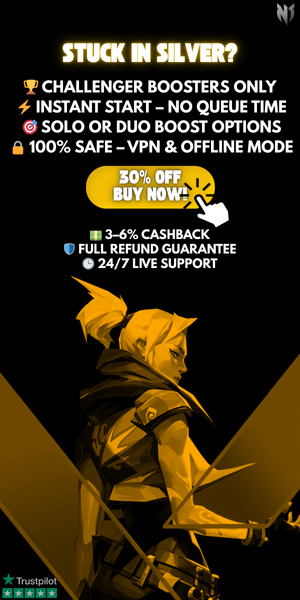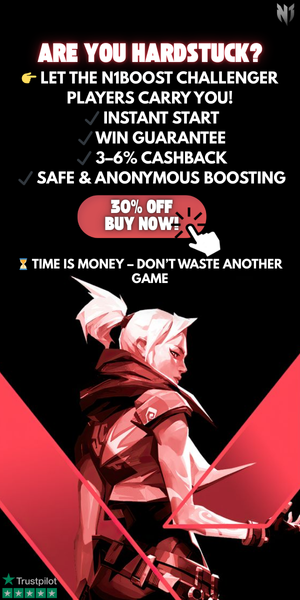The Economics of Valorant: Why Some Accounts Are Worth Thousands
Introduction
In the world of Valorant, account values can vary significantly, with some accounts worth thousands of dollars. What makes these accounts so valuable? Is it the weapon skins, Battle Pass rewards, or the rank of the account? In this blog, we will explore the economics of Valorant, looking at the factors that influence the value of an account and why some accounts can fetch astronomical prices.
What Contributes to the Value of a Valorant Account?
The value of a Valorant account is determined by several factors, including the following:
- Rare and Exclusive Skins: Certain skins and cosmetics, especially those that are limited edition, significantly increase the account's value.
- Rank and Competitive History: High-rank accounts with impressive competitive history are often worth more due to their status and the skill level they represent.
- Battle Pass Completion: Accounts that have completed all levels of past Battle Passes gain access to exclusive and rare rewards, which can raise the account’s value.
- Account Age and History: Older accounts that have been around for a longer period often have skins and items that can no longer be obtained, increasing their appeal and worth.
- Unique Cosmetics: Player cards, sprays, and other collectibles tied to special events or promotions add to the rarity and overall value of the account.
The Role of Rare and Exclusive Skins
One of the most significant contributors to the value of an account is the presence of rare skins. Skins from special events, collaborations, or limited-time offers are often the most valuable. These skins can only be obtained during specific events or promotions, making them highly coveted by players and collectors.
For example, skins from Valorant Champions tournaments or seasonal collaborations with popular brands can see their value double or even triple over time. Because these skins are no longer available after the event ends, they become rare commodities, driving up the value of the account that owns them.
The Influence of Rank and Competitive History
A high-rank account in Valorant can be worth significantly more due to the prestige and status it represents. Players looking for a competitive edge or a shortcut to high-ranking matches are often willing to pay a premium for accounts with high rank placements such as Radiant, Immortal, or Diamond. Additionally, an account’s competitive history, such as consistent wins and tournament achievements, can increase its value, as these attributes suggest a skilled and experienced player.
Battle Pass Completion: A Key to Account Value
Completing Battle Passes is another way to increase the value of your account. Each season, Valorant releases a new Battle Pass, filled with exclusive cosmetics such as weapon skins, player cards, and sprays. While some of these items are available for free, others are locked behind the Premium Battle Pass. Accounts that have completed previous Battle Passes can hold significant value due to the exclusivity of these rewards. Over time, Battle Pass skins can become highly sought after, especially when they are no longer available through new purchases.
Account Age and Historical Value
Older accounts have a certain level of appeal simply due to their age. Accounts that have been active since Valorant’s early days are likely to contain skins and items that are no longer obtainable. These accounts are considered more valuable because they represent a part of Valorant’s history. Items such as seasonal skins from past events, or weapon skins that were only available during the initial months of the game, make older accounts desirable to collectors.
The Economics of Valorant Accounts: A Growing Market
The market for Valorant accounts is expanding as more players and collectors realize the potential value of rare and high-tier accounts. Some accounts can be sold for thousands of dollars, particularly if they contain rare skins, a high rank, and Battle Pass rewards. This has led to a growing secondary market where accounts are bought and sold, with prices fluctuating based on demand, rarity, and seasonality.
In addition to individual account sales, there are also third-party platforms and marketplaces where players can exchange Valorant skins and cosmetics. These platforms provide a transparent way to buy and sell cosmetics, further increasing the overall value of Valorant accounts.
Why Do Players Buy Expensive Valorant Accounts?
There are several reasons why players are willing to spend large sums on Valorant accounts:
- Skipping Grind: Many players prefer to buy an account with a high rank or rare skins to skip the grind and jump straight into competitive play at the highest levels.
- Collectibility: Some players are collectors who enjoy acquiring rare and exclusive items that are no longer available.
- Prestige: Owning an account with rare skins or a high rank can be a status symbol among Valorant players, demonstrating their skill and commitment to the game.
How to Increase Your Account’s Value
If you’re looking to increase the value of your Valorant account, consider the following tips:
- Complete Battle Passes: Aim to complete each season’s Battle Pass to unlock exclusive skins and cosmetics.
- Invest in Rare Skins: Purchase limited edition skins and cosmetics during special events or collaborations to increase your account’s value.
- Maintain a High Rank: Focus on improving your rank to Radiant or Immortal levels, which can make your account more attractive to buyers.
- Avoid Selling for Quick Profit: While selling an account might seem appealing, holding onto rare items for longer periods can increase their value over time.
Conclusion
The economics of Valorant accounts is an intriguing topic for players and collectors alike. By focusing on rare skins, Battle Pass completions, and maintaining a high rank, players can significantly increase the value of their accounts. The growing market for Valorant accounts and their cosmetics shows that, for some players, investing in these digital assets is as valuable as investing in real-world items.
Track Your Account’s Value with ValorantValue.com
To track how much your Valorant account is worth, including all your rare skins, Battle Pass rewards, and rank progress, visit ValorantValue.com. This platform provides a detailed breakdown of your account’s value, helping you stay informed about your investment.
Tags
Jettor
Author



